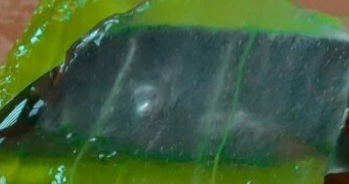Aloe vera has been used for centuries as a medicinal plant for its numerous healing properties. From treating skin irritations to supporting digestion, aloe vera is versatile and powerful. However, it’s important to use it correctly and safely to avoid side effects or complications. Here’s a guide on how to safely use aloe vera as a medicinal plant.
1. Choosing the Right Type of Aloe Vera
The most commonly used variety for medicinal purposes is Aloe vera barbadensis miller. Make sure the plant you’re using is the correct type, as other varieties of aloe may not offer the same benefits and can be toxic.
- Tip: Always source your aloe vera from a reliable source, and if you’re growing it at home, ensure it’s the right variety.
2. How to Harvest Aloe Vera Safely
When using fresh aloe vera from the plant, it’s crucial to harvest and prepare it properly.
- Step-by-Step Harvesting:
- Choose a Mature Leaf: Look for a thick, outer leaf from the base of the plant, as these leaves contain the most gel.
- Cut the Leaf: Using a clean, sharp knife or scissors, cut the leaf close to the base of the plant.
- Drain the Yellow Sap (Aloe Latex): After cutting the leaf, prop it upright for a few minutes to allow the yellowish sap (known as aloe latex) to drain out. Aloe latex contains aloin, which can be irritating and should be avoided, especially when using aloe internally.
- Remove the Skin: Once the latex has drained, peel away the tough outer skin using a knife or peeler to expose the clear aloe gel inside.
3. Safely Using Aloe Vera Gel Externally
For Skin Irritations and Burns: Aloe vera gel is widely used for treating minor burns, cuts, rashes, and sunburns due to its cooling and soothing properties. It promotes wound healing and can reduce inflammation.
- How to Use:
- Apply a small amount of fresh aloe vera gel directly to the affected area.
- Repeat 2-3 times a day until the irritation or burn heals.
- Safety Tip: Do a patch test before applying aloe vera gel to a larger area of skin, especially if you have sensitive skin or allergies. Apply a small amount to your forearm and wait 24 hours to ensure no reaction occurs.
For Acne or Skin Conditions: Aloe vera’s antibacterial and anti-inflammatory properties make it effective for acne and skin issues like eczema.
- How to Use:
- Apply fresh aloe gel to the acne-affected area or over eczema-prone skin after cleansing. Leave it on for 20-30 minutes, then rinse with cool water.
4. Safely Using Aloe Vera Internally
While aloe vera gel can be consumed for its digestive and detoxifying benefits, it’s essential to avoid the latex, which can cause digestive issues and act as a harsh laxative.
For Digestion and Detoxification: Aloe vera juice (made from the gel, not the latex) can help soothe the digestive tract, reduce inflammation, and aid digestion. It’s often used to relieve symptoms of acid reflux, constipation, or irritable bowel syndrome (IBS).
- How to Use:
- Blend 1 tablespoon of fresh aloe vera gel with 1 cup of water or juice. Drink once a day, preferably on an empty stomach.
- Safety Tip: Start with a small amount and monitor how your body reacts. Consuming too much aloe vera can lead to stomach cramps or diarrhea, especially if any aloe latex is accidentally consumed.
5. Avoiding Aloe Latex
The yellow sap (latex) found between the outer leaf and inner gel contains aloin, which can irritate the digestive system. If consumed in large quantities, it can lead to severe abdominal cramps, dehydration, and even kidney problems.
- How to Avoid: Always drain the latex before using the aloe gel and make sure the aloe gel is thoroughly cleaned. If you’re buying aloe vera juice, look for “decolorized” or “filtered” varieties to ensure it’s free of aloe latex.
6. How Much Aloe Vera Should You Use?
Moderation is key when using aloe vera internally. Here are some guidelines:
- Topical Use: Aloe vera can be applied externally multiple times a day, but always ensure you’re using the gel properly cleaned of latex.
- Internal Use: When drinking aloe vera juice, start with 1-2 tablespoons of fresh gel per day, diluted in water or juice. Do not exceed more than 4 tablespoons of aloe gel daily, unless advised by a healthcare professional.
7. When to Avoid Aloe Vera
- Pregnancy and Breastfeeding: Aloe vera latex should not be used during pregnancy or breastfeeding, as it may stimulate uterine contractions or cause digestive upset in infants.
- Children: Aloe latex should not be given to children, and even aloe gel should be used cautiously.
- Kidney or Heart Conditions: The laxative effect of aloe latex can cause dehydration and affect electrolyte balance, so avoid internal use if you have kidney or heart issues.
- Allergies: People allergic to plants in the Liliaceae family (such as garlic, onions, or tulips) may also be allergic to aloe vera.
8. Purchasing Aloe Vera Products
If you’re buying aloe vera products such as gels, creams, or juices, always look for high-quality, organic products without unnecessary additives. Avoid products that contain artificial colors, fragrances, or alcohol, which can irritate the skin or digestive system.
Conclusion
Aloe vera is an incredibly versatile medicinal plant, offering numerous benefits when used safely and correctly. Whether applied to the skin for burns or taken internally for digestive health, it’s important to follow proper guidelines to avoid any adverse effects. Always avoid the latex portion of the plant, use moderation with internal consumption, and consult with a healthcare professional if you have any medical conditions. With the right precautions, aloe vera can be a valuable addition to your natural health
